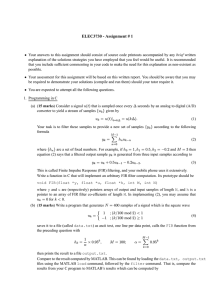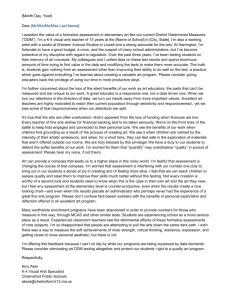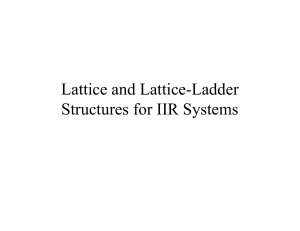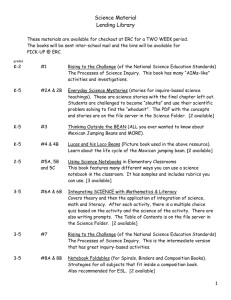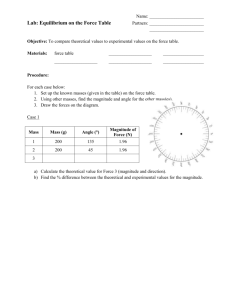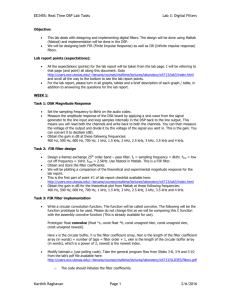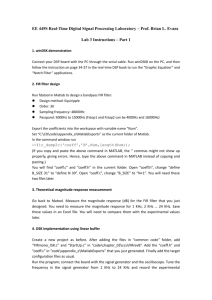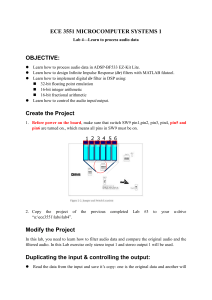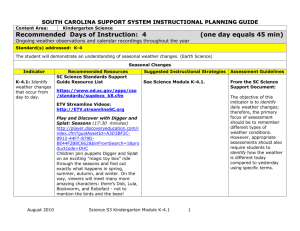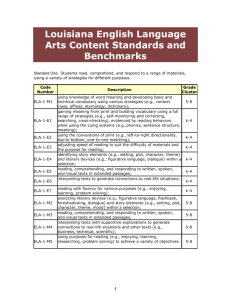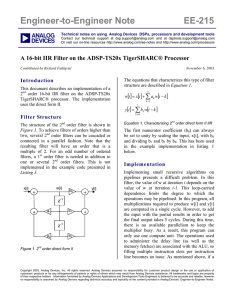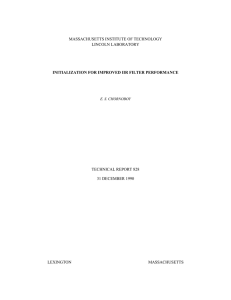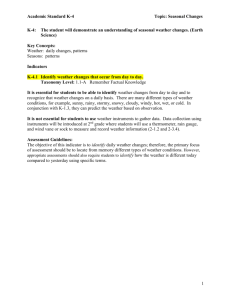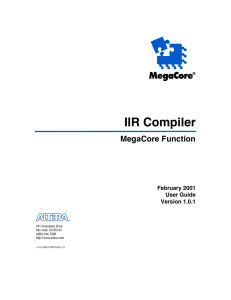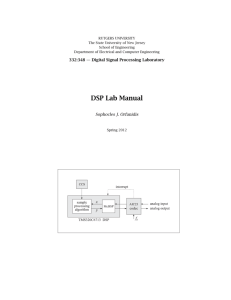Part 3
advertisement
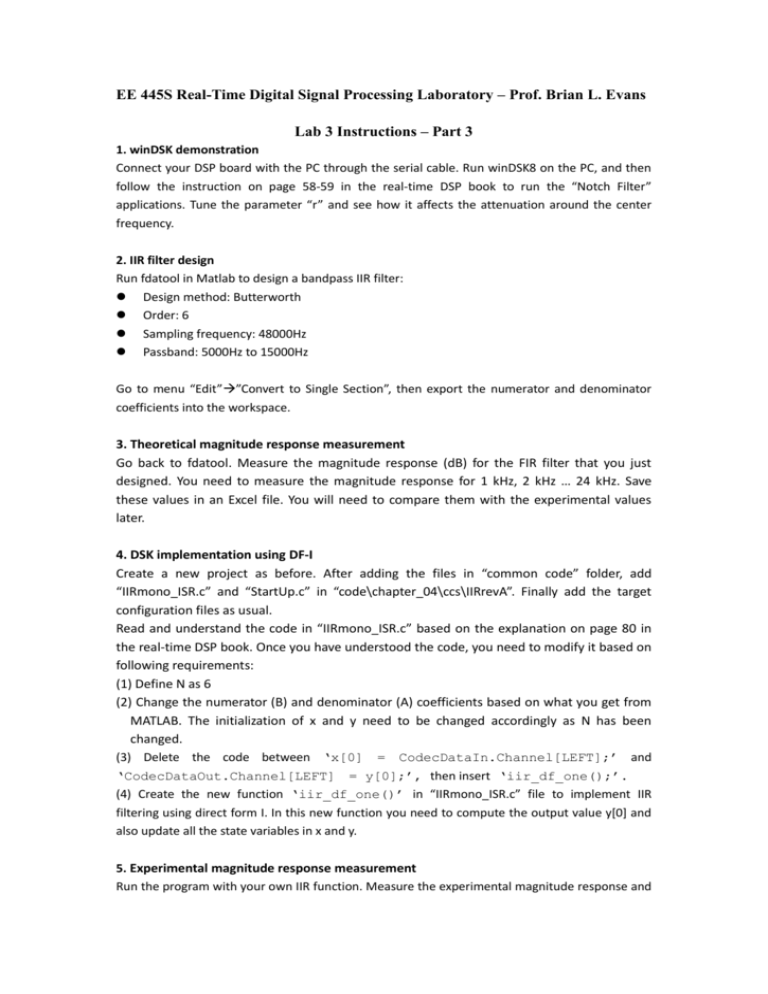
EE 445S Real-Time Digital Signal Processing Laboratory – Prof. Brian L. Evans
Lab 3 Instructions – Part 3
1. winDSK demonstration
Connect your DSP board with the PC through the serial cable. Run winDSK8 on the PC, and then
follow the instruction on page 58-59 in the real-time DSP book to run the “Notch Filter”
applications. Tune the parameter “r” and see how it affects the attenuation around the center
frequency.
2. IIR filter design
Run fdatool in Matlab to design a bandpass IIR filter:
Design method: Butterworth
Order: 6
Sampling frequency: 48000Hz
Passband: 5000Hz to 15000Hz
Go to menu “Edit””Convert to Single Section”, then export the numerator and denominator
coefficients into the workspace.
3. Theoretical magnitude response measurement
Go back to fdatool. Measure the magnitude response (dB) for the FIR filter that you just
designed. You need to measure the magnitude response for 1 kHz, 2 kHz … 24 kHz. Save
these values in an Excel file. You will need to compare them with the experimental values
later.
4. DSK implementation using DF-I
Create a new project as before. After adding the files in “common code” folder, add
“IIRmono_ISR.c” and “StartUp.c” in “code\chapter_04\ccs\IIRrevA”. Finally add the target
configuration files as usual.
Read and understand the code in “IIRmono_ISR.c” based on the explanation on page 80 in
the real-time DSP book. Once you have understood the code, you need to modify it based on
following requirements:
(1) Define N as 6
(2) Change the numerator (B) and denominator (A) coefficients based on what you get from
MATLAB. The initialization of x and y need to be changed accordingly as N has been
changed.
(3) Delete the code between ‘x[0] = CodecDataIn.Channel[LEFT];’ and
‘CodecDataOut.Channel[LEFT] = y[0];’, then insert ‘iir_df_one();’.
(4) Create the new function ‘iir_df_one()’ in “IIRmono_ISR.c” file to implement IIR
filtering using direct form I. In this new function you need to compute the output value y[0] and
also update all the state variables in x and y.
5. Experimental magnitude response measurement
Run the program with your own IIR function. Measure the experimental magnitude response and
compare it with the theoretical one.
6. Compare number of clock cycles
Compare the number of clock cycles cost by ‘iir_df_one()’ with different optimization
levels.
7. DSK implementation using SOS
Implement the IIR filter using SOS and measure the experimental magnitude response. To get the
coefficients please go back to fdatool and choose “Edit””Convert to Second-Order Sections”.
Here are some hints:
(1) The code for variable declaration should look like:
#define N 2
#define M 3
float
float
float
float
float
// IIR filter order
// number of biquads
B[M][N+1] = {{},{},{}}; // numerator coefficients
A[M][N+1] = {{},{},{}}; // denominator coefficients
G[M+1] = {};
// scale factors
x[M][N+1] = {{},{},{}}; // input value (buffered)
y[M][N+1] = {{},{},{}}; // output values (buffered)
(2) The in function “Codec_ISR()” should look like:
x[0][0] = CodecDataIn.Channel[LEFT];
// current input value
for (i=0;i<M;i++){
biquad(i);
biquad
}
CodecDataOut.Channel[LEFT] = y[M-1][0];
value
WriteCodecData(CodecDataOut.UINT);
//
port
// implement the i_th
//
send
setup
output
the
LEFT
data
to
(3) Note that in function ‘biquad(i)’ you need to compute the output using x[i][] and y[i][];
update the state variables; and then assign x[i+1][0]=y[i][0].
(4) Run the program; connect the board with the signal generator and the oscilloscope. Tune
the frequency in the signal generator from 1 kHz to 24 kHz and record the experimental
magnitude response. Compare this with the theoretical magnitude response. (You may draw
two lines in the same graph)
8. Do not forget to answer the lab questions on the webpage.

